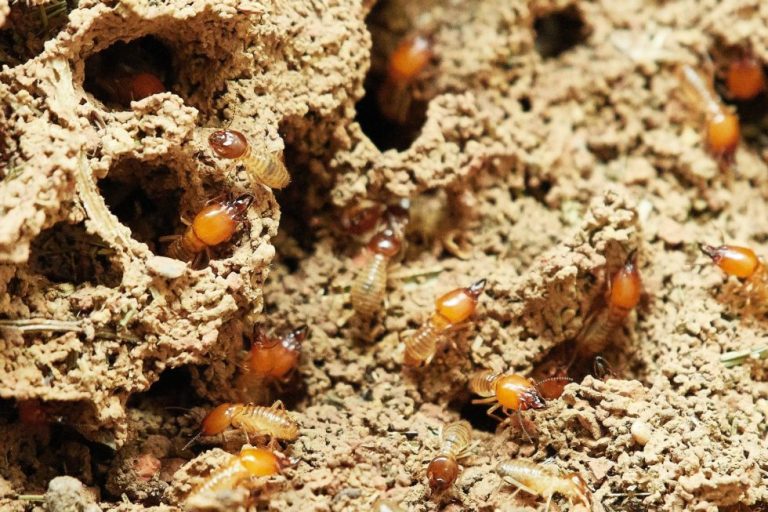Image by Roy Buri from Pixabay (https://pixabay.com/photos/termites-nature-food-insect-3367350/)
Just hearing the word termite sends a shiver down one’s spine. And wouldn’t you know that Baltimore has the distinction of being one of the “Top 50 Termite Cities in the U.S.”? With the weather getting warmer, this problem becomes more prevalent. These insidious critters (the Eastern Subterranean Termite, in our case) can silently cause damage requiring deep pockets to repair. The best-case scenario is to ward off these critters during the pre-construction process. How?
- Ensure proper pre-treatment depending on whether the foundation is a poured slab or a crawlspace and/or basement foundation. The Maryland Department of Agriculture provides a very helpful online Guide for Builders, Pest Management Professionals and Homeowners.
- Ensure that there is no wood in direct contact with soil (such as a deck post or wooden stair framing).
- Cover exposed wood surfaces with a sealant or metal barrier.
But what happens if you are doing a fix and flip—and there was no issue with the pre-purchase termite inspection but you want to be sure that the home is as protected as possible from future termite damage?
- Reduce the proximity of moisture to the base of the house. It is important to ensure that grading maintains a slope away from the house, that the gutter system is free of debris, that there is appropriate flashing installed, that there isn’t too much mulch/bark/gravel adjacent to the house, etc.
- Moisture anywhere in the house is also very problematic; for that reason, crawl spaces and attics require adequate ventilation and interior leaks must be detected and resolved expeditiously.
- Make sure there is no firewood or any wood scraps stored next to the house.
- Do not attach any wooden trellises to the house.
- Fill any openings that would allow termites to access the house.
If you discover any evidence of termite activity and require the use of a pest control operator, make sure that the company is licensed with the Maryland Department of Agriculture Pesticide Regulation Section (either as a pesticide applicator or as a pest control technician) and that the license is active. Of course, you can check a company’s reputation with the Better Business Bureau if the company is BBB accredited. You can also call the Pesticide Regulation Section at (410) 841-5710 and/or the county Office of Consumer Affairs to see if any complaints have been filed against the company. The state of Maryland even provides an information sheet titled, “Beware of Fly-by-Night Companies Illegally Applying Pesticides in Homes.”
From personal experience, identifying and treating termites is best left to professionals. In our case, we noted large numbers of winged insects on our wooden deck. We called a pest control operator and had the company identify the insect, which turned out to be winged termites (or “swarmers”). Our property was adjacent to a very wooded area. The pest control operator was honest in that he could not be sure whether it was a swarm that had originated from the woods and had not taken up residence in our home versus a swarm that had originated from our house. Upon inspection of the interior and exterior of the house, there were no visible tunnels or damage. In an abundance of caution, we decided to treat for termites even though it seemed unlikely that we had an existing issue. (For the record, the University of Maryland has some good photos on their site of signs of termite activity.)
There is a plethora of treatment options, each with its own pros and cons. In our case, we chose a bait tube system. For the duration of our residence at that home, we contracted for annual inspections, during which no activity or damage was ever noted. It is hard to say whether the bait tube system solved the issue, as we were not sure we had an issue to begin with. But at the saying goes, better to be safe than sorry.


